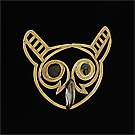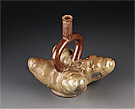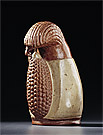Curriculum links Design/Tech
The Andes mountain range creates three distinct geographic areas—the costa (coast), the sierra (mountains) and the selva (tropical rainforest). The costa is a narrow strip of land bordered by the Pacific Ocean to the west. In the south-east lies the Altiplano, a dry high altitude plain. This region is renowned as one of the driest deserts in the world and is crossed by many rivers that run down from the mountains. To the east lies the selva, the beginnings of the Amazon rainforest.
Andean peoples learned to exploit the wide variations in temperature and rainfall of this varying topography where the difference in altitude between mountain peaks and valley bottoms can be as great as 3,048 metres. These variations influenced food production methods and the choice of materials.
Focus: years 7+8
The Design and Technologies Gold and the Incas: Lost worlds of Peru secondary school online resource focuses on specialisations within the subject’s two strands:
- Design and Technologies knowledge and understanding
- Design and Technologies processes and production skills.
(Australian Curriculum: Design and Technologies—released 2014)
The two specialisations that have been utilised for this resource are:
The resource has been developed using a range of objects from the Gold and the Incas exhibition. The exhibition has strong links with a number of content descriptions in the 7 to 8 year band of the Design and Technologies curriculum, especially ones that refer to:
- Investigating the ways in which products, services and environments evolve locally, regionally and globally through the creativity, innovation and enterprise of individuals and groups
- Analysing how food and fibre are produced when designing managed environments and how these can become more sustainable
- Analysing ways to produce designed solutions through selecting and combining characteristics and properties materials, systems, components, tools and equipment.
- Investigate the history of peanut production in Peru. Why was the peanut such a symbolic food for Andean peoples? Read more about the objects that were buried with the Lord of Sipán including a spectacular gold and silver bead peanut shell necklace.
- What other foods were important in the diets of ancient Peruvian peoples and how did they benefit the health of the people?
- Irrigation was essential to food production in ancient Peru. To find out more visit the Gold and the Incas geography inline resource (Geography resource – hyperlink)
- Conservation alert!
- Read the catalogue entry on the National Gallery of Australia’s Chimú mask (catalogue 148) and learn how the original maize kernels have been preserved in the mask to allow viewing when the object is not on display.
- Interesting extras!














